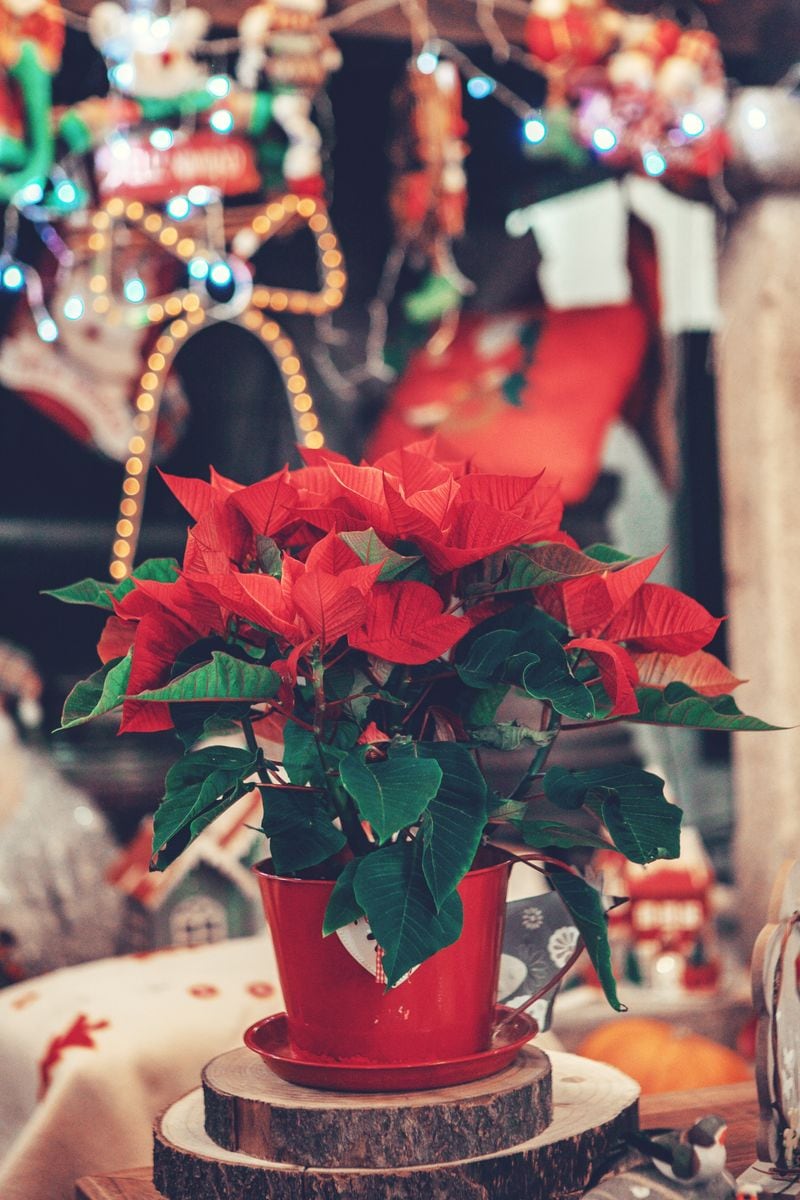Long before the poinsettia graced holiday decorations, it held deep cultural and spiritual significance for the Aztecs, who called it "cuetlaxochitl." This name, translating to "mortal flower that perishes and withers like all that is pure," reflected the Aztecs' reverence for the plant as a symbol of purity and new life earned by warriors who died in battle. Beyond its symbolic meaning, the Aztecs utilized the plant's vibrant red bracts to create dyes for textiles and cosmetics, and its sap was used to treat fevers and infections.
The plant thrived in parts of Central America, where other Mesoamerican civilizations also admired it. The Maya, for example, referred to it as "k'alul wits," or "fire flower." Known as "Nochebuena" in Mexico today and "Flor de Pascua" in other Spanish-speaking countries, the plant was an integral part of pre-Christian Indigenous culture.
Poinsettia's Journey to the U.S.
The plant's introduction to the U.S. is attributed to Joel Roberts Poinsett, the first U.S. ambassador to Mexico, who encountered the "cuetlaxochitl" in 1825 near Taxco. Captivated by its beauty, Poinsett propagated it in South Carolina and helped popularize it in botanical gardens and nurseries across the United States. However, Poinsett's legacy is steeped in controversy.
A proponent of American expansionism and an enslaver, he played a key role in overseeing the Trail of Tears, one of the darkest chapters in U.S. history. His interference in Mexican politics further tarnished his reputation, expelling him from the country. Despite Poinsett's troubling history, the plant was named "poinsettia" in his honor, erasing its Indigenous origins. In 2002, the U.S. Congress declared December 12th National Poinsettia Day to commemorate Poinsett's death in 1851, mainly overlooking the plant's Aztec heritage.
A Holiday Symbol with a Complex Legacy
In the 1920s, the poinsettia became a Christmas staple thanks to the marketing efforts of Albert and Paul Ecke, poinsettia growers in California. Through strategic promotions and breeding programs, the Eckes transformed the plant into a holiday icon as ubiquitous as the Christmas tree. Today, poinsettias are available in various colors, including red, cream, yellow, and pink, and remain among the best-selling flowers worldwide.
However, this success comes at a cost. The U.S. has dominated the poinsettia market with restrictive trade policies, limiting imports from Mexico, where the plant naturally grows.
Reclaiming the "Cuetlaxochitl"
There has been a growing effort to reclaim the plant's Indigenous name and heritage in recent years. According to Nuestro Stories, social media influencers like Fernanda Cortes advocate using cuetlaxochitl instead of poinsettia to honor its Aztec roots and reject the colonial legacy tied to Poinsett. The movement also highlights the broader cultural erasure associated with the plant's U.S. adoption.
Reclaiming the plant's original name is part of a larger effort to restore its rightful place in Indigenous history. By choosing to call the plant by its Aztec name, we can honor the people who first cultivated and cherished it.
,type=downsize)
